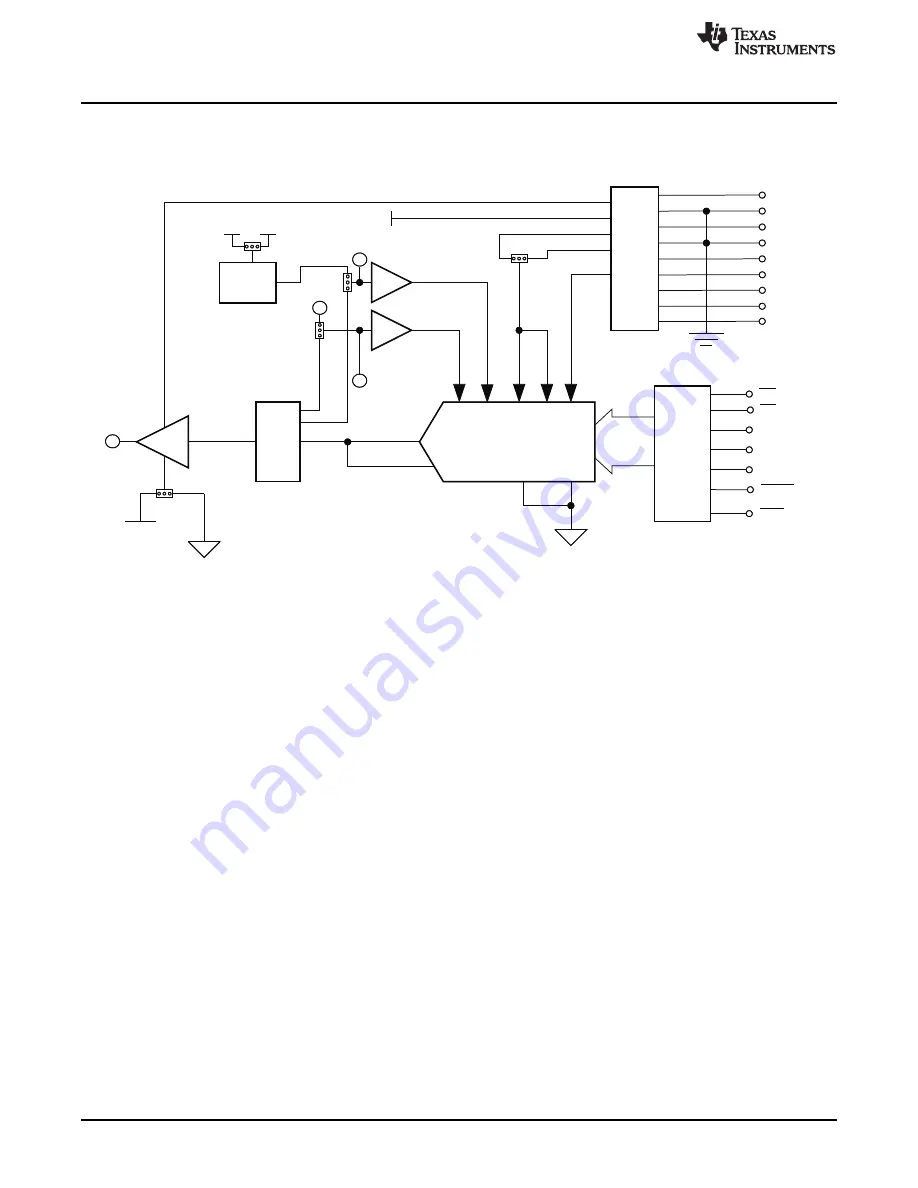
DAC Module
VCC
VSS
VCC
GND
GND
VDD
(J6 )
(P 6 )
(J3 )
SCLK
W4
VSS
SDI
(J4)
(P4)
(W9)
(W3)
(W12)
CS
VSS
± 5 VA
+ 3 .3 VD
FS
U4A
TP2
TP8
W8
LDAC
RST
+ 1 .8 VD
+ 3 .3 VA
U4B
TP1
+ 5 VA
W11
W1
+ 3 .3 VA
VCC + 5 VA
U2
TP3
SDO
(J2 )
(P 2 )
(W 6 )
(W 10 )
W5
REF5050
OPA277
V
H
REF
V
L
REF
IOV
DD
V
L
REF
V
H
REF
AV
DD
DV
DD
IOV
DD
V
OUT
R
FB
DGND
AGND
PCB Design and Performance
www.ti.com
The DAC output can be monitored through pins 2 and 6 of the J4 header connector. The DAC output can
be switched through the W2 jumper for stacking the EVM for daisy-chaining purposes.
A block diagram of the EVM is shown in the
.
Figure 1. Block Diagram
2
PCB Design and Performance
This chapter describes the layout design of the PCB, the physical and mechanical characteristics of the
EVM, and the EVM test performance procedure performed. The list of components on this evaluation
module is also included in this section.
2.1
PCB Layout
The DAC8881 EVM is designed to preserve the performance quality of the DAC, device under test, as
specified in the datasheet. Carefully analyzing the physical restrictions of the EVM and the given or known
elements that contribute to performance degradation of the EVM is key to a successful design
implementation. These obvious attributes that diminish the performance of the EVM can be addressed
during the schematic design phase by selecting appropriate components and building a correct circuit. The
circuit should include adequate bypassing, identifying and managing analog and digital signals, and
knowing or understanding the mechanical attributes of the components.
The critical part of the design is the layout process. The main concern is primarily the placement of
components and the proper routing of signals. The bypass capacitors should be placed as close as
possible to the pins, and the analog and digital signals should be properly separated from each other. The
power and ground plane is very important and should be carefully considered in the layout process. A
solid plane is ideally preferred but sometimes impractical, so when a solid plane is not possible, a split
plane is an acceptable alternative. When considering a split plane design, analyze component placement
and carefully split the board into its analog and digital sections starting from the device under test. The
ground plane plays an important role in controlling noise and other effects that otherwise contribute to the
error of the DAC output. To ensure that the return currents are handled properly, route the appropriate
signals only in their respective sections, meaning the analog traces should only lay directly above or below
the analog section and the digital traces in the digital section. Minimize the length of the traces but use the
largest possible trace width allowable in the design. These design practices can be seen in the following
figures.
4
DAC8881 Evaluation Module
SLAU257A – September 2008 – Revised November 2009
Copyright © 2008–2009, Texas Instruments Incorporated



















